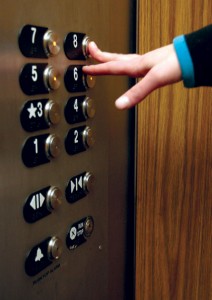 This article will explain the elements of a powerful elevator pitch and then walk you through how to craft your own.
This article will explain the elements of a powerful elevator pitch and then walk you through how to craft your own.
What is an Elevator Pitch?
This is the 30-60 second business description of what you do and why someone should work with you. It’s called an “Elevator Pitch” because it describes the challenge: “How would you explain your business and make a sale if fate placed you in an elevator with your dream prospect and you only had the time it takes to get from the top of the building to the bottom?”
Why Is Having an Elevator Pitch So Important?
You only have 30-60 seconds to make a powerful first impression. The attention span of the average person is just 30 seconds before their mind starts wandering. The other reason is people have less time today. You need to grab them quickly or lose them forever.
Essential Elements of a Powerful Elevator Pitch
1. Concise. Your pitch should take no longer than 30-60 seconds.
2. Clear. Use language that everyone understands. Don’t use fancy words thinking it will make you sound smarter. Your listener won’t understand you and you’ll have lost your opportunity to hook them.
3. Powerful. Use words that are powerful and strong. Deliver the “Sis-Boom-Bang” to grab their attention!
4. Visual. Use words that create a visual image in your listeners mind. This will make your message memorable.
5. Tell a Story. A short story, that is. A good story is essentially this: someone with a problem either finds a solution or faces tragedy. Either type of story can be used to illuminate what you do.
6. Targeted. A good elevator pitch is aimed for a specific audience. If you have target audiences that are vastly different, you might want to have a unique pitch for each.
7. Goal Oriented. A great elevator pitch is designed with a specific outcome in mind. What is your desired outcome? You may have different pitches depending on different objectives. For instance do you want to: make a sale , gain a prospect, enlist support for an idea, or earn a referral.
8. Has a Hook. This is the element that literally snags your listener’s interest and makes them want to know more. This is the phrase or words that strike a chord in your listener.
How to Craft Your Killer Elevator Pitch
- Write down what you do. Write it several different ways. Try writing it at least 10-20 different ways. Don’t edit yourself at all. You will edit later. This first step is for generating ideas. Don’t hold back. Ideas can be goofy, serious, wild, funny, or conservative. It doesn’t matter. The goal is to get at many ideas as possible down on paper.
- Write a very short story that illustrates what you do for people. If necessary, the story can be long. You will boil it down later. Paint a picture with words.
- Write down your objective or goal. Do you want to make a sale, gain a prospect, enlist support for an idea, earn a referral, or something else?
- Write 10-20 action statements. This is a statement or question designed to spur the action associated with your goal.
- Record yourself. You can use Dragon Dictation if you don’t have a recording device. Dragon Dictation is a free phone based service that translates your messages into text as well as providing an online link to the original audio.
- Let it sit. Come back to what you’ve written with fresh eyes and ears the next day or later on in the same day.
- Highlight the good stuff. Listen and read through what you’ve recorded and written. Then either highlight or circle the phrases that hook you with clear, powerful, and visual words. Obviously not all the words will fall into these categories. You still need connector words, but you want them to be as few as possible.
- Put the best pieces together. Again you’ll want to write down several versions of this much tighter pitch. Tell us what you do and why people should want to do business with you. Include elements from your story if you can fit it in.
- Do a final edit cutting as many unnecessary words as possible. Rearrange words and phrases until it sounds just right. Again, the goal is 30-60 seconds maximum.
- Dress Rehearsal. Run it by as many people as you can get to listen to you. Get feedback from colleagues, clients you trust, friends and family.
- Done for now. Take your final elevator pitch and write it down. Memorize and practice it until it just slides off your tongue naturally.
- Continue to improve. Over time, always be on the listen for phrases that you think could make your elevator pitch more clear and impactful. And then test it out. Every once in a while you will probably benefit by starting from scratch because things always change: you, your business , your goals, and your clients’ needs.
By K Stone of Life Learning Today
